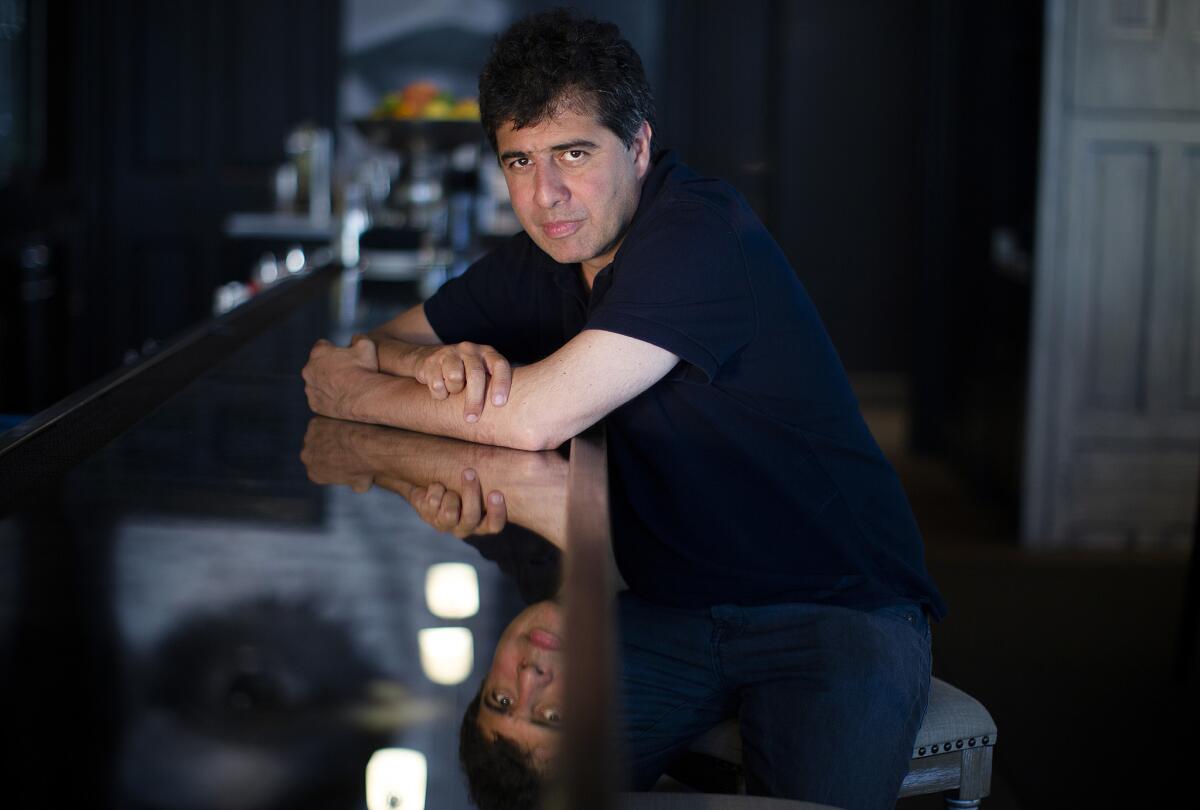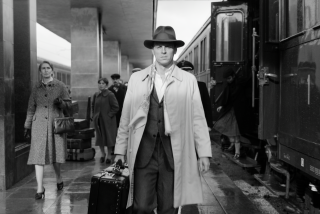Highsmith’s ‘Two Faces’ caught director’s eye

- Share via
American novelist Patricia Highsmith was a master of the psychological thriller who attracted the eye of so many filmmakers.
Alfred Hitchcock’s 1951 version of her first book, “Strangers on a Train,” is one of his cinematic masterpieces. Rene Clement in the 1960s and Anthony Minghella in 1999 adapted Highsmith’s 1955 book, “The Talented Mr. Ripley,” into acclaimed movies. And now Oscar-nominated screenwriter Hossein Amini (“The Wings of the Dove”) has made his feature directorial debut with his adaptation of Highsmith’s lesser-known 1964 novel, “The Two Faces of January,” which opened Friday.
Set in 1962 in Athens, Crete and Turkey, “The Two Faces of January” stars Viggo Mortensen as a World War II veteran turned stock swindler who accidentally kills a detective trying to bring him back to the United States. Kirsten Dunst plays his younger wife, who knows of her husband’s crime but is enjoying the high life in Europe. Oscar Isaac is a young American tour guide who is also a small-time hustler; when he helps the couple to flee Greece, he finds himself complicit in the detective’s death.
“I read the book at university,” said the personable Amini, 48, during a recent lunch in downtown Los Angeles. “I thought this would be an interesting movie.”
Amini initially was drawn to the “ordinariness” of the criminals.
“Ripley is a psychopath, and you are taking this delight in how clever and cunning he is,” Amini said. “These guys aren’t cunning, and they are not particularly good.”
After he wrote the screenplay of the 1996 drama “Jude,” Amini revisited the Highsmith novel and attempted to get the rights from the publishing house, Diogenes. Despite his being an established screenwriter, Amini said, the company turned him down flat.
Years later, he met Tom Sternberg, a producer on “The Talented Mr. Ripley” who had a good relationship with the publisher. The project landed at Mirage Enterprises, co-owned by Minghella and producer-director Sydney Pollack. “Two Faces of January” didn’t stay at Mirage very long because Minghella and Pollack died in 2008. (Highsmith died in 1995.)
With Sternberg still attached as a producer, Amini continued to revise the script. In late 2010, it made its way into Mortensen’s hands.
“I didn’t even know he was reading it, and I got a call out of the blue and said he would like to meet,” Amini said.
Mortensen said in an interview that he relished the chance to put his stamp on a Highsmith character.
“They are not cut-and-dried,” he said. “There is a moral ambivalence and a contradiction in most characters. Everyone loses on some level. Everybody is flawed.”
The actor added: “There are not many great scripts around, and this was a really intelligent one. We started talking and kept corresponding until he managed to get it put together.”
With the star of “The Lord of the Rings” films attached, the project found financing at StudioCanal; Working Title Films joined the team.
But to his surprise, Amini later discovered that, for him, the most difficult aspect of directing was editing.
“I jumped into the editing room very quickly and was standing over the editor’s shoulders,” he said. “After three or four viewings, I just couldn’t see if it was good or bad. I was projecting my own fears and paranoia and insecurities.”
And he realized pacing was an issue.
“It’s half drama and half thriller, so trying to find the balance was so hard,” Amini said.
He ultimately replaced the editor.
“When the second editor came, I sort of left him alone for a week, and then I saw it,” the director said.
And his panic dissipated. “Suddenly, I began to see the film again.”
Follow me on Twitter @mymackie
More to Read
Only good movies
Get the Indie Focus newsletter, Mark Olsen's weekly guide to the world of cinema.
You may occasionally receive promotional content from the Los Angeles Times.









